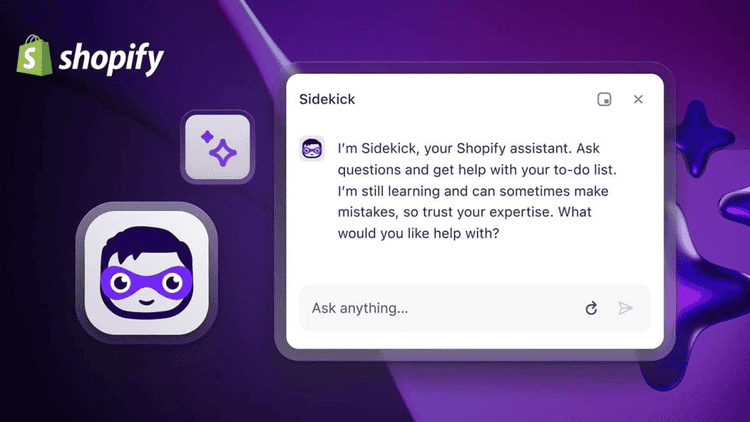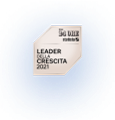Introduction
June 2025 marks a significant leap forward for Shopify merchants, thanks to the release of the Summer ’25 Edition. With over 150 new updates, this release focuses on simplifying store management, improving logistics workflows, and offering new tools for customization.
Some of these features, introduced as previews in May, have now matured and been expanded. Others are completely new and designed to give merchants deeper control over their sales processes and customer experience.
Horizon: A New Foundation for Shopify Themes
Among the most impactful announcements is Horizon, the new architecture that will power future Shopify themes. This isn’t just a graphic refresh—it’s a structural change that simplifies the creation of modular, conversion-friendly storefronts.
With Horizon, merchants can:
Build tailored page layouts using Theme Blocks, reusable and moveable sections that require no coding.
Use built-in AI to generate content blocks by describing the intent or mood they want to create.
Choose from 10 newly released free themes, designed to be fast, adaptable, and conversion-focused across industries—from fashion to food, from B2B to lifestyle.
Horizon makes high-quality design accessible to a wider range of merchants, including small businesses, startups, and agencies that want to move quickly without compromising aesthetics or performance.

A Smarter Sidekick: AI That Supports Real Decisions
Shopify’s virtual assistant, Sidekick, is now more powerful and deeply integrated into the platform. No longer just a helpdesk-style tool, the updated Sidekick acts more like a co-pilot—reading data and proposing useful actions.
New capabilities include:
Handling complex analytical questions, such as “Why have sales of my best-selling product dropped this week?” or “Which categories have the highest margins?”
Responding to prompts like “Create a promotion for overstocked items” with suggestions for campaigns, bundles, or discount strategies.
Generating contextual AI images for product pages, banners, or homepage visuals, ready to use without needing external tools.
Sidekick is becoming part of the team—helping merchants make sense of their data and move faster with greater clarity.

Advanced Market & Catalog Management
For merchants selling across multiple countries, channels, or business models (B2C, B2B), Shopify is introducing a new framework powered by updated Markets and Catalogs APIs.
These improvements solve a key challenge: managing a consistent brand across varied geographies and customer types.
Notable features include:
The ability to assign a unique catalog to each market, with tailored prices, currencies, languages, and availability.
Creating rules by country, customer type, or sales channel, enabling precise segmentation and targeting.
Smoother integration with Shopify’s checkout and logistics tools, reducing fulfillment time and optimizing cross-border shipping costs.
For merchants expanding internationally or managing complex catalogs, these tools offer the structure needed to scale without confusion.
Migrating to the New Custom Reports
Shopify is phasing out its legacy custom reports in favor of a new analytics system that is more interactive and customizable.
Key considerations:
All legacy reports must be migrated by June 12, 2025. After that, old reports will no longer be available.
The new system allows merchants to build interactive dashboards, pulling data from multiple sources with customized filters and dynamic visualizations.
Even those with minimal analytics experience can gain insights using pre-built templates and guided views.
While the migration may seem technical, it directly affects how merchants make decisions—from product launches to ad spend to inventory planning.
Quiet Improvements That Matter
Alongside major changes, Shopify has also refined several existing features that impact day-to-day operations. These include:
Copy-paste functionality for theme sections now works seamlessly with the new Theme Blocks, saving time during page building.
Smarter multi-location inventory handling, allowing Shopify to automatically split orders between fulfillment centers if one is out of stock.
Purchase limits per product can now be set, ideal for product launches or managing limited stock scenarios.
For Shopify Plus merchants, Checkout Blocks now support minimum and maximum order values, even segmented by customer type (e.g., DTC vs B2B).
Combined refunds allow merchants to issue partial refunds to a card and the rest as store credit—providing more flexibility and encouraging future purchases.
Conclusion
The Summer ’25 Edition shows once again that Shopify isn’t just an eCommerce platform—it’s a constantly evolving ecosystem. Each update reflects a deep understanding of what merchants actually need to grow, adapt, and stay competitive.
Whether you’re running a small local store or managing a complex international brand, these updates offer concrete opportunities to improve workflows, create better customer experiences, and make smarter decisions.
This isn’t just about features—it’s about structure, strategy, and readiness. In a market that moves fast, having the right tools—at the right time—can make all the difference.
 Back to blog
Back to blog









